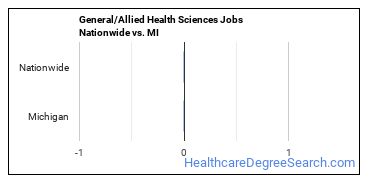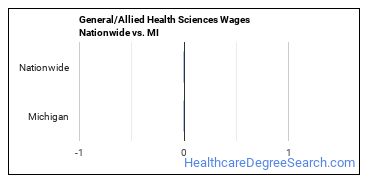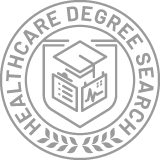General/Allied Health Sciences Schools in Michigan
137 students earned Health Studies degrees in Michigan in the <nil> year.
In terms of popularity, General/Allied Health Sciences is the 31st most popular major in the state out of a total 142 majors commonly available.
Featured schools near , edit
Education Levels of General/Allied Health Sciences Majors in Michigan
Health Studies majors in the state tend to have the following degree levels:
| Education Level | Number of Grads |
|---|---|
| Bachelor’s Degree | 107 |
| Associate Degree | 14 |
| Award Taking 2 to 4 Years | 9 |
| Award Taking 1 to 2 Years | 9 |
| Doctor’s Degree (Research / Scholarship) | 7 |
| Doctor’s Degree (Professional Practice) | 7 |
| Doctor’s Degree (Other) | 7 |
Gender Distribution
In Michigan, a health studies major is more popular with women than with men.

Racial Distribution
The racial distribution of health studies majors in Michigan is as follows:
- Asian: 4.4%
- Black or African American: 12.4%
- Hispanic or Latino: 10.9%
- White: 63.5%
- Non-Resident Alien: 0.0%
- Other Races: 8.8%

Jobs for General/Allied Health Sciences Grads in Michigan

Wages for General/Allied Health Sciences Jobs in Michigan

Most Popular General/Allied Health Sciences Programs in MI
There are 10 colleges in Michigan that offer health studies degrees. Learn about the most popular 10 below:
97% of students get financical aid. Students who attend this public school pay an average net price of $19,195. Grads earn an average early-career salary of $43,067 after earning their degree at this institution.
The student to faculty ratio is 12 to 1. The student loan default rate is 1.20% which is lower than average. An average student at Siena Heights University will pay a net price of $21,553.
This public school has an average net price of $13,218. 53% of the teachers are full time. Most students complete their degree in 4.78 years.
The full-time teacher rate is 48%. This private institution charges an average net price of $17,999. The student to faculty ratio is 10 to 1.
100% of the teachers are full time. The student loan default rate of 3.50% is a good sign that graduates can afford their loan payments. Seeking financial aid? At this school, 87% of students receive it.
This private institution charges an average net price of $18,789. Students enjoy a student to faculty ratio of 11 to 1. The 3.10% student loan default rate is lower than average.
It takes the average student 4.48 years to graduate. Students enjoy a student to faculty ratio of 11 to 1. 100% of students get financical aid.
14 to 1 is the student to faculty ratio. A typical student attending Kalamazoo Valley Community College will pay a net price of $4,291. Graduates earn an average $30,357 after graduation.
Graduates earn an average $31,739 after graduation. This school boasts a lower than average student loan default rate of 2.40%. Of all the students who attend this school, 68% get financial aid.
14 to 1 is the student to faculty ratio. Of all the teachers who work at the school, 38% are considered full time. This school boasts a lower than average student loan default rate of 2.70%.
Related Majors in Michigan
Below are some popular majors in the state that are similar to health studies.
| Major | Annual Graduates in MI |
|---|---|
| General Health & Wellness | 165 |
View all majors related to General/Allied Health Sciences
Explore Major by State
Alabama
Arkansas
Connecticut
Florida
Idaho
Iowa
Louisiana
Massachusetts
Mississippi
Nebraska
New Jersey
North Carolina
Oklahoma
Rhode Island
Tennessee
Vermont
West Virginia
View Nationwide General/Allied Health Sciences Report
References
- College Factual
- National Center for Education Statistics
- O*NET Online
- Image Credit: By Sandra M. Palumbo under License
More about our data sources and methodologies.
Featured Schools
 Request Info
Request Info
|
Southern New Hampshire University You have goals. Southern New Hampshire University can help you get there. Whether you need a bachelor's degree to get into a career or want a master's degree to move up in your current career, SNHU has an online program for you. Find your degree from over 200 online programs. Learn More > |







